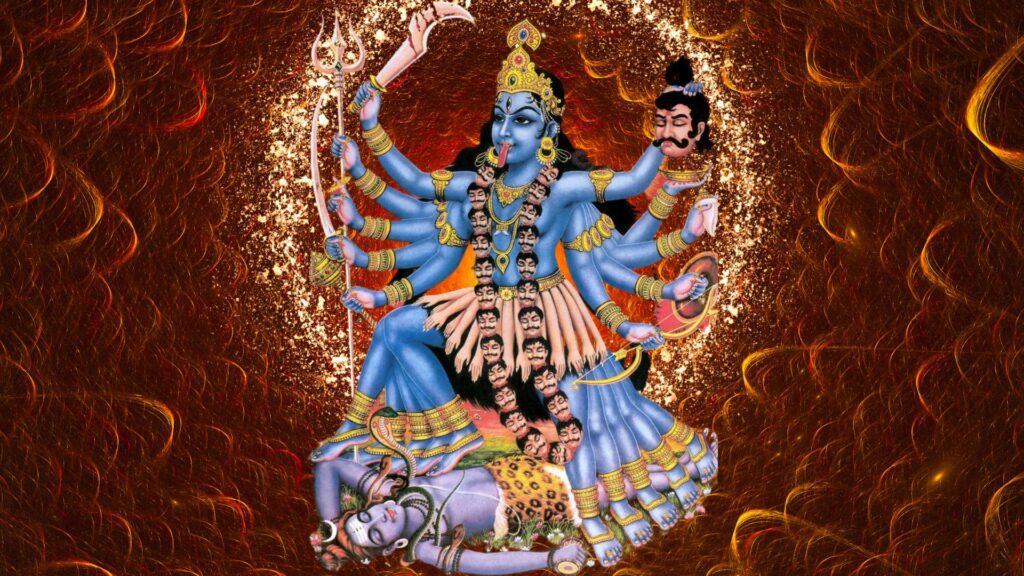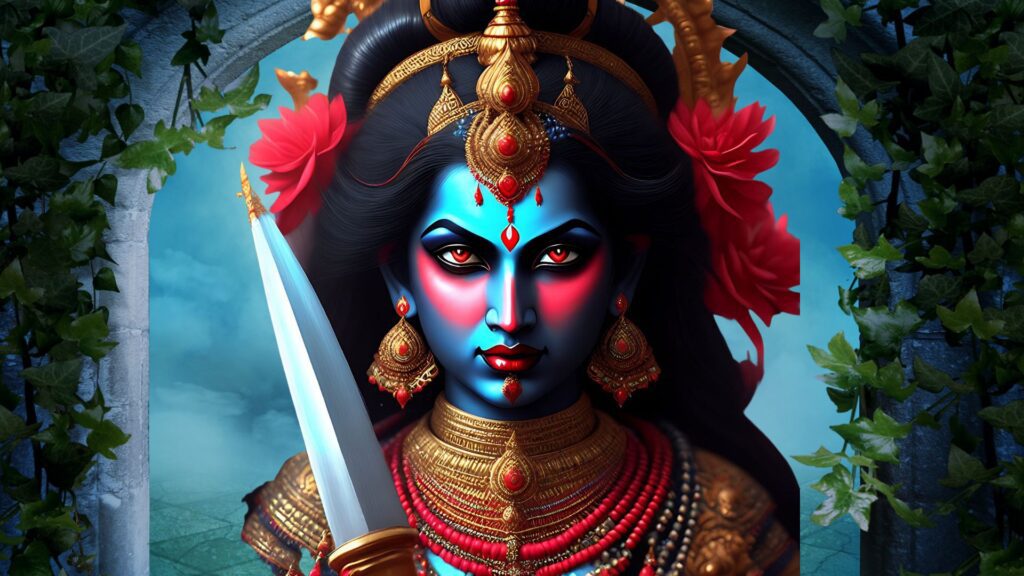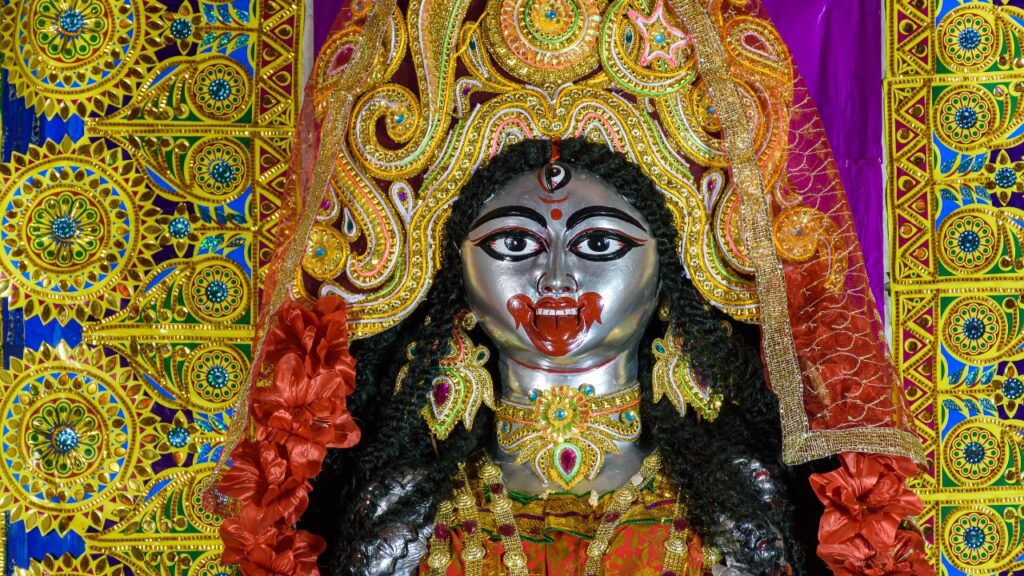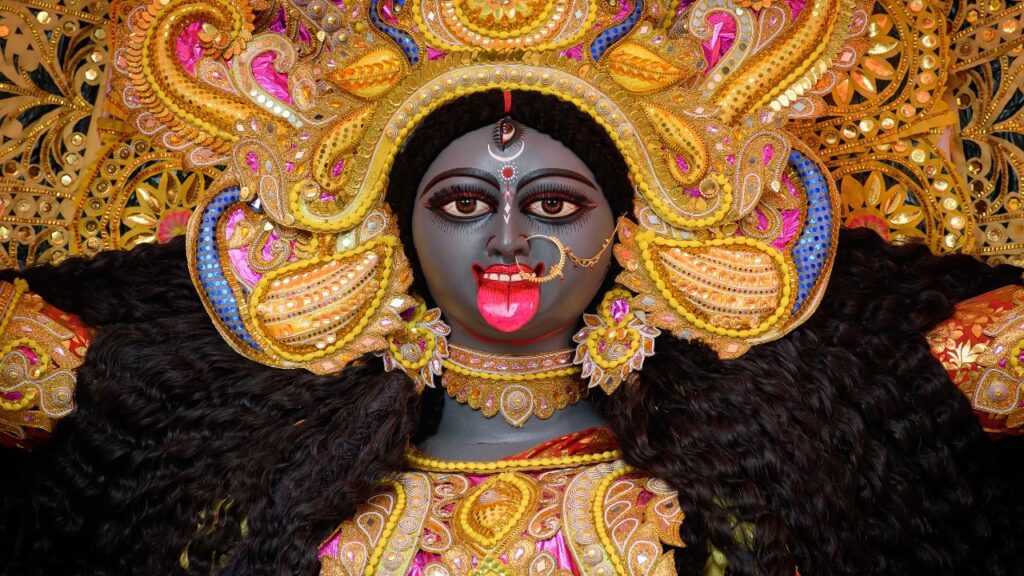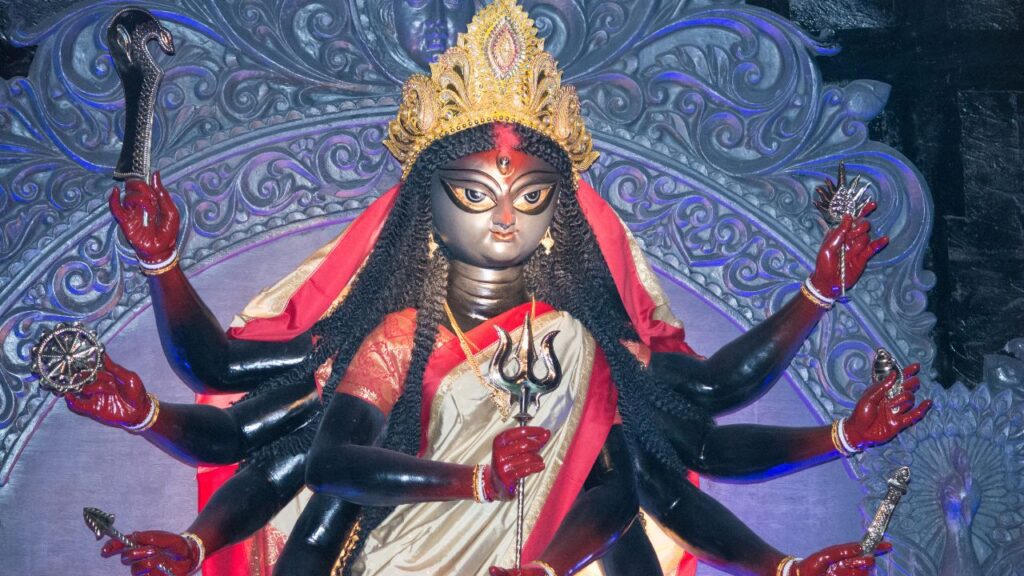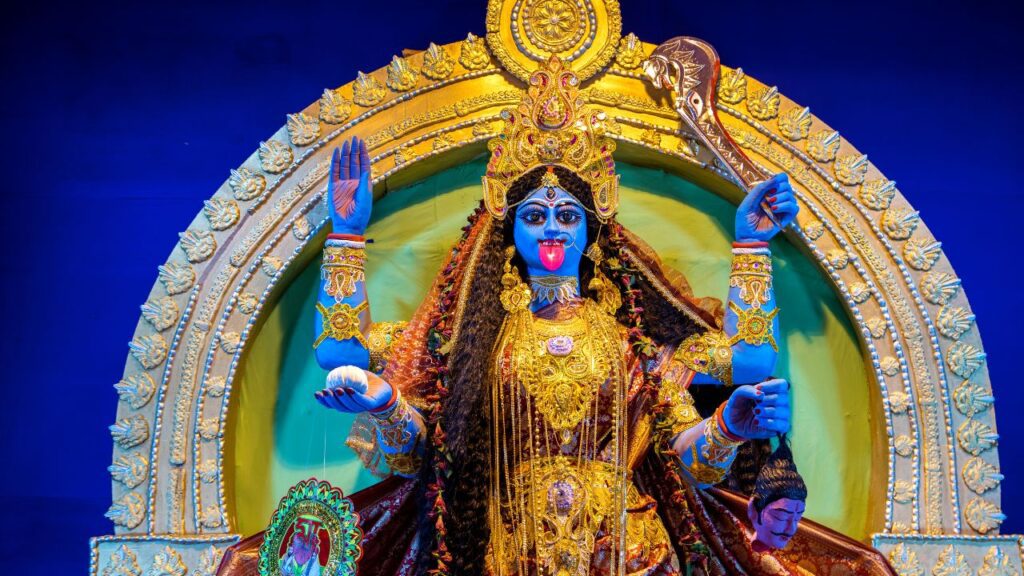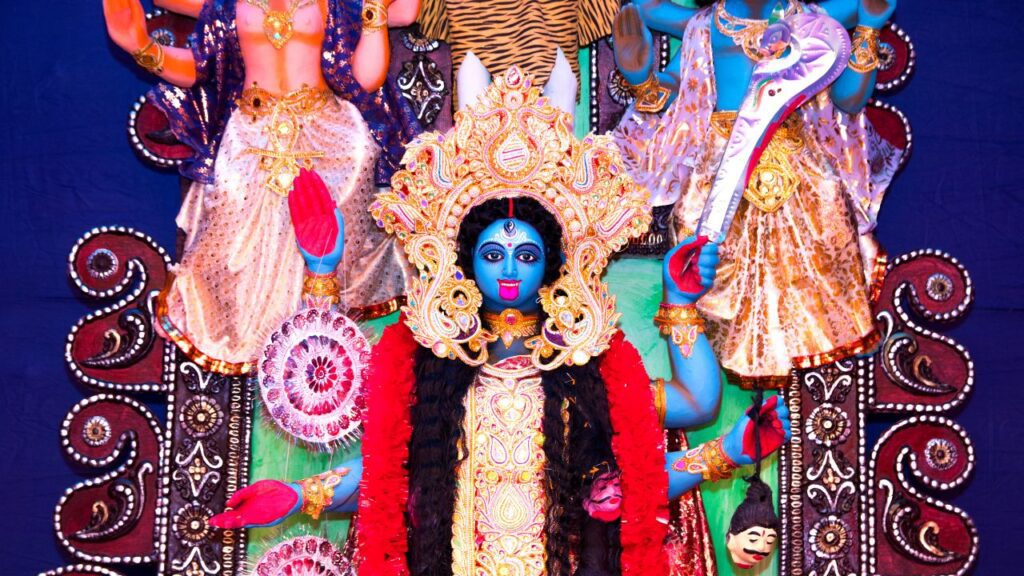Who is Kali Ma? Powerful Hindu Goddess kali
introduction
Powerful and mysterious Hinduist Kali Ma inspires millions of people all across. This ferocious goddess questions conventional ideas of divinity by personifying both death and creation. Her arresting look—many arms and a necklace of skulls—has made her a legendary figure in Hindu art and culture.
Examining Kali Ma’s place in the Hindu pantheon and her importance to followers, this article explores her multifarious nature. It looks at her impact outside Hinduism and the customs linked with Kali worship. Readers will by the end have a better awareness of this fascinating deity and her ongoing influence on cultural and spiritual environments.
Kali’s Order in the Hindu Pantheon
Among the most potent and revered deities in the Hindu pantheon is Kali Ma . She associates with destruction, death, and the cycle of life and rebirth and reflects the ferocious side of the heavenly mother goddess Durga . With dark blue or black skin, four arms, and a necklace of human skulls, Kali’s look is sometimes described as terrible and frightening .
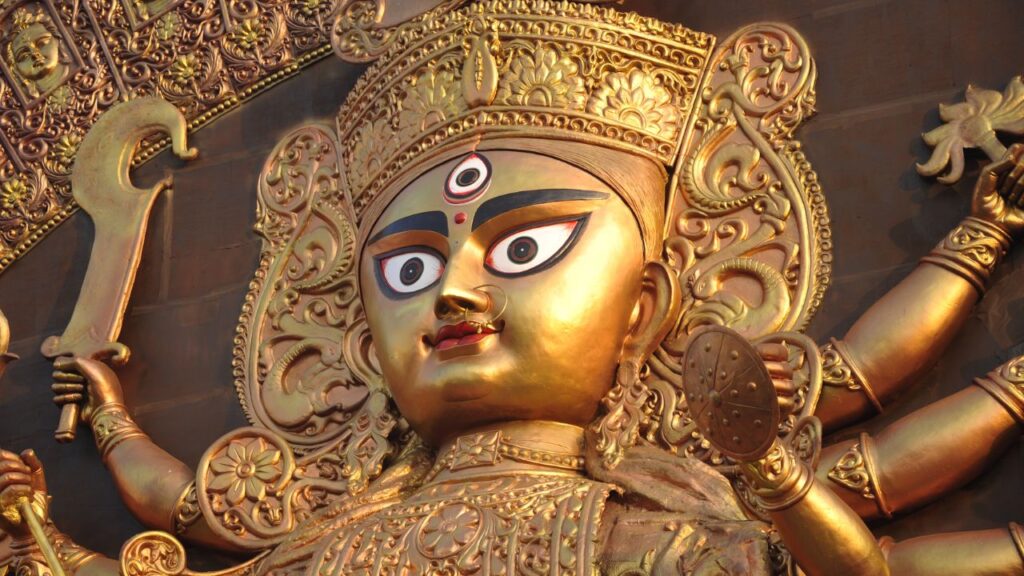
Relationship with Another Goddesses
Kali has a complicated and multifarious relationship with other Hindu goddesses. She is occasionally understood as the incarnation of the goddess Durga, who stands for the divine feminine force . Other strong goddesses Kali is connected with include Parvati, Lakshmi, and Saraswati . Some traditions regard Kali as the first of the ten Mahavidyas, a set of tantric deities.
Relations to Shiva
An integral part of Kali’s mythology is her relationship to the god Shiva. Often portrayed as Kali’s consort, Shiva is viewed as complementing force in the cosmos . Whereas Kali stands for the female principle , Shiva stands for the male principle. Some legends see Kali as originating from Shiva’s third eye or as a manifestation of Parvati, Shiva’s consort.
Role in the Cosmic Order
As the ultimate destroyer, Kali is very important in the cosmic order since she eradicates the energies of ignorance and evil . She is connected with the cycle of life and death and said to be the origin of all creation and destruction in the universe . In Hindu dharma, kali represents the death of the ego in the ultimate aim of human life . Moksha, or escape from the cycle of rebirth, marks this death.
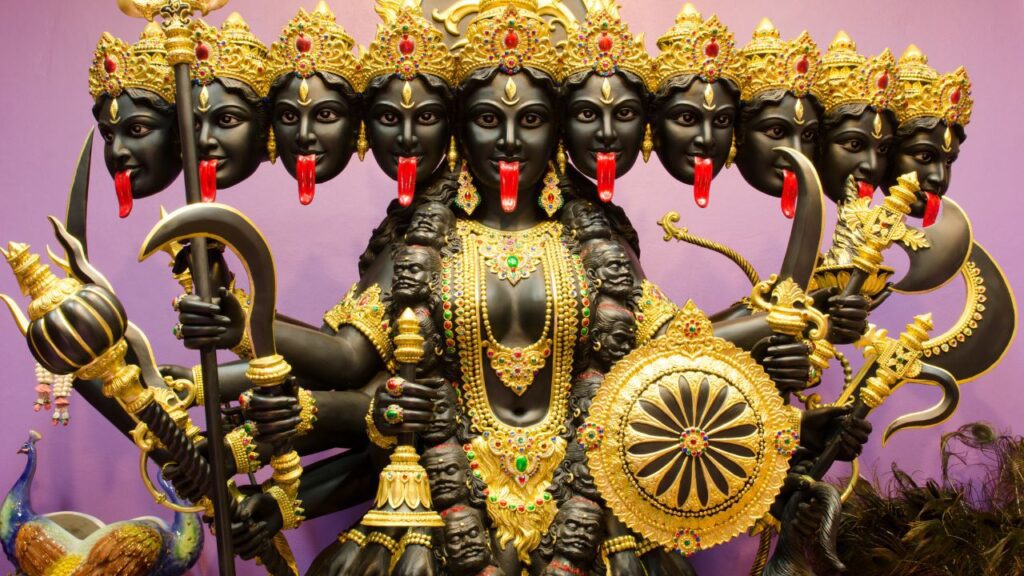
Kali Worship Custom
Tantric rites
Three forms of tantric practices—Sattvic, Rajasic, and Tamasic—can be distinguished in kali worship . Sattvic tantra is singing mantras while mental visualizing procedures. While Tamasic Tantra may include meat, alcohol, and animal sacrifices, Rajasic Tantra employs vegetarian offerings and outer ceremonies. Still, Tamasic tantra is regarded as the most harmful and is not advised without appropriate direction .
Yoga and Mindfulness
Many times, devotees contact with Kali through yoga and meditation. Some practitioners 108 times daily chant particular mantras, including “Om Aim Kreem Kleem, chandmundyay vichay namaha”. This habit is supposed to be more successful on full moon evenings or between midnight and three AM . Those looking for a more straightforward technique should also regularly chant “Kali, Kali, Kali” or “Om Kreem Kalikayei Namaha.
Presentations and sacrifices.
Offerings to Kali have historically comprised both vegetarian and non-vegetarian foods. Dākśīnācāṛyā methods call for vegetarian food free of garlic or onion . Certain Vāṃācāṛya traditions could call for meat offerings made without onion and garlic . Nonetheless, many contemporary followers and academics stress that the most beautiful present to Kali is the eradication of one’s bad traits . Some of the followers think that the best kind of worship is having meals with Kali and communicating with her as a mother.
Kali’s Effect Outside Hinduism
Beyond the confines of Hinduism, Kali’s impact permeates many facets of contemporary society and philosophy. Her strong symbolism and multifarious character have sparked interpretations and adaptations in many disciplines.
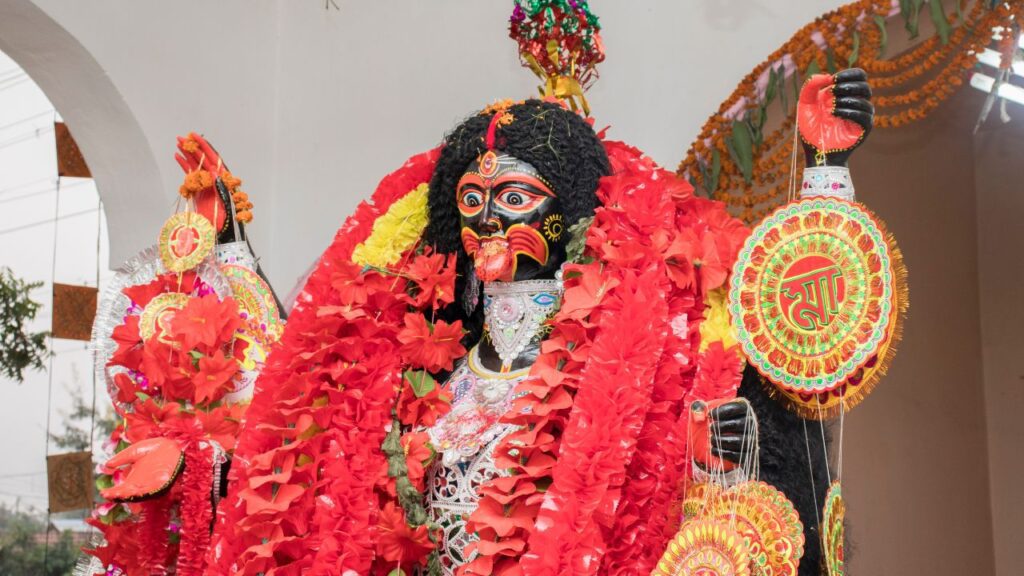
Modern Movement Styles
Kali has evolved in New Age spirituality into a metaphor of personal emancipation and development. She is considered as a force that breaks through conditioned ideas and false personal identities, therefore dispelling preconceptions . Many practitioners see Kali as a way to uncover latent sides of oneself, so allowing them to become bold and fierce in love, ecstasy, and standing up to inner and outside demons .
Feminist Readings
In feminist speech, Kali has become rather important as a symbol. Many people consider her as the living example of revolt against conventional wisdom. She is a symbol for women’s empowerment because of her strong, autonomous character and rejection to fit society norms. With her dark skin, messy hair, and intimidating look, Kali subverts conventional beauty standards by signifying self-acceptance and rejection of society demands .
Reference to Pop Culture
Kali is a well-known person in many kinds of media and entertainment because of her spectacular images and sophisticated symbolism. Her representation in popular culture, however, has occasionally resulted in misunderstandings and misreading. For example, the movie “Indiana Jones and the Temple of Doom” showed a very heretical and unorthodox terrorist group honoring Kali, far outside from mainstream Hinduism [9]. Such depictions have helped to create false ideas of Kali’s place in Hindu society.
Notwithstanding these distortions, Kali never fails to captivate and motivate people from many backgrounds. Many people who want to question social conventions and delve further into more spiritual and self-awareness resonance with her multifarious character as a destroyer of evil, a symbol of empowerment, and a force of transformation.
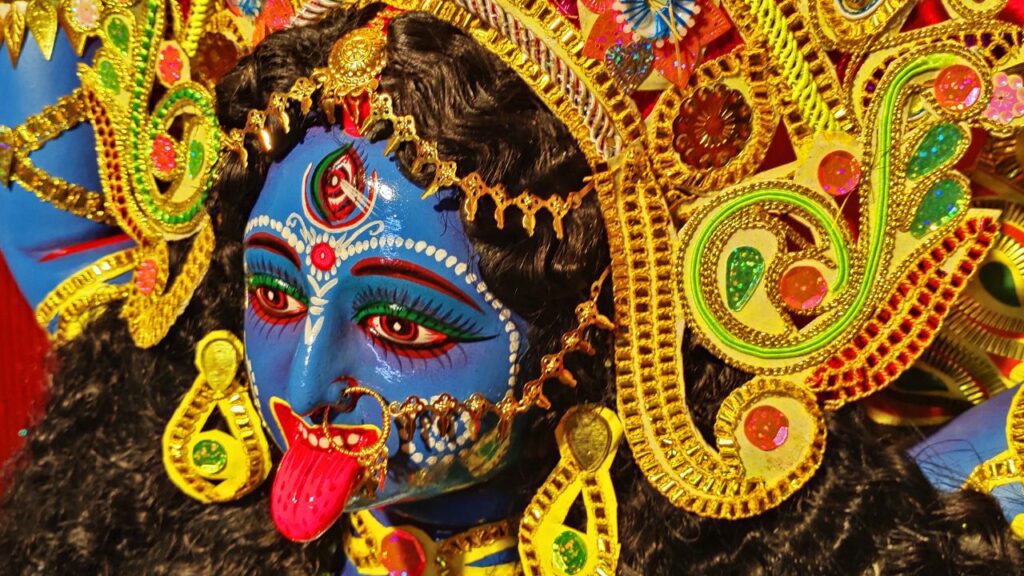
Conclusion
Kali Ma’s importance as a multifarious symbol is shown by her ongoing presence in Hindu spirituality and her increasing influence outside conventional religious lines. From feminist debate to New Age mysticism, her multifarious character—that of both destruction and creation—has an influence on many facets of modern society. This strong goddess still inspires and challenges people since she provides a different prism through which one may examine social conventions and personal development.
In summary, Kali Ma’s participation in Hinduism and more general cultural influence highlight the variety of Hindu mythology. Her strong images and great symbolism invite people from many backgrounds to interact with her convoluted story, therefore offering a lot of information to consider and investigate. Kali is still a fascinating person as her impact grows since she bridges old customs with modern interpretations and promotes a better knowledge of the divine feminine in spirituality and culture.
Frequently asked questions
In the framework of Hindu ideas, who is Kali?
In Hinduism, Kali is a major deity sometimes referred to as the goddess of time, death, and doom. Often referred to as the dark goddess, she is the feminine form of the Sanskrit word “kala,” meaning “time-doomsday-death” or “black.”
What capabilities and talents Kali is credited with?
Representing the whole force of nature, the Hindu goddess Kali captures both its destructive and caring qualities. She is renowned for her ability to defend her people from evil by acting boldly—that which others might not—that is, by Beyond traditional lines of good and bad, Kali embodies the twin forces of creation and destruction.
In Hindu iconography, what does Kali stand for?
Kali stands for many deep elements including death, destruction, and darkness. She also represents Mother Nature, therefore capturing the ideas of formlessness and immortality. Kali shows the connectivity of creation and destruction, therefore reflecting the cycle of life and the universe.
How would one gain from praying to Kali?
Devotees of Kali benefit greatly. Praying to Kali results in Moksha, sometimes known as Liberation, a condition free from rebirth. She helps her followers on their spiritual travels by controlling time and motion. Moreover, Kali guarantees her supporters’ safety and well-being by offering defense against rivals and other threats.
#kali #who #maakali #hindu #god

